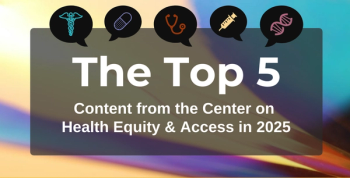
Vestibular Migraine Associated With Various Indicators, Comorbidities
A recent retrospective, single-center study sought to characterize symptoms associated with vestibular migraine attacks, symptoms in between attacks, psychiatric comorbidities, and interictal neuro-otologic examination findings.
A recent retrospective, single-center study sought to characterize symptoms associated with vestibular migraine (VM) attacks (ictal symptoms), symptoms in between attacks (interictal symptoms), psychiatric comorbidities, and interictal neuro-otologic examination findings.
The
Study authors identified 131 patients with VM seen between August 2014 and March 2018. Most patients studied were women (n = 105), and the mean age of disease onset was 44.3 years. The authors found that 57.3% of patients had a personal history of migraine, 50.8% had a family history of migraine, and 61.1% had a history of motion sickness prior to the onset of vestibular symptoms.
The most common ictal symptoms reported were triggered and spontaneous vertigo, which often presented with photophobia and phonophobia, experienced by 118 (90.1%) of patients. Other ictal symptoms reported by participants were nausea (51.1%), aural symptoms 60.3%), and headache (49.6%).
Interictal symptoms that were visually induced were reported by 116 (88.6%) of patients, while 67 (51.1%) of patients reported persistent dizziness during the interictal period and 86 (65.6%) patients reported head motion. In terms of psychiatric comorbidities, 92 (70.2%) of patients had anxiety, 52 (40.5%) had depression, 38 (26%) had insomnia, 15 (11.5%) reported phobic disorders, and 11 (8.4%) had psychogenic disorders.
Abnormal neuro-otologic findings were demonstrated in 56 (42.7%) of patients, including vibration-induced nystagmus, head-shaking induced nystagmus, hyperventilation-induced nystagmus, and positional nystagmus.
Given the results of this study, the authors were able to conclude that “VM typically affects women in their 40s with a personal and family history of migraine.”
Reference
Beh SC, Masrour S, Smith SV, Friedman DI. The spectrum of vestibular migraine: clinical features, triggers, and examination findings [published online February 8, 2019]. Headache. doi: 10.1111/head.13484.
Newsletter
Stay ahead of policy, cost, and value—subscribe to AJMC for expert insights at the intersection of clinical care and health economics.








































